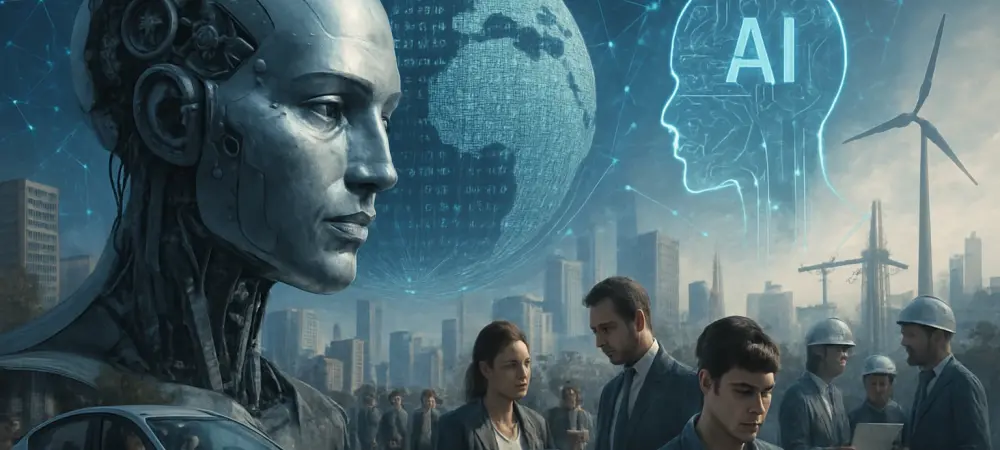I’m thrilled to sit down with Dominic Jainy, a seasoned IT professional whose expertise in artificial intelligence, machine learning, and blockchain has made him a leading voice in exploring how these technologies can transform industries and lives. With a passion for practical applications, Dominic has been at the forefront of demystifying AI, helping businesses and individuals harness its potential. In this conversation, we dive into the societal shifts AI is driving, its role in amplifying human potential, the mindset needed to adapt, and the challenges of ensuring its benefits are accessible to all.
How did your journey with AI begin, and what excites you most about its potential to reshape our world?
My journey with AI started when I saw its ability to solve complex problems in ways humans alone couldn’t—think predictive analytics in healthcare or optimizing supply chains. What excites me most is AI’s power to democratize opportunity. It’s not just about tech; it’s about giving a small business owner the tools to compete with giants or a student in a remote area access to world-class learning. We’re talking about a future where barriers to knowledge and resources crumble, and that’s incredibly inspiring.
What’s one way you’ve seen AI act as a force multiplier for everyday people, not just tech experts?
I’ve seen AI transform how people manage time and creativity. Take a freelancer, for instance—they can use AI tools to automate invoicing, draft proposals, or even brainstorm marketing ideas in minutes instead of hours. It’s like having a personal assistant that never sleeps. This doesn’t replace their skills; it frees them to focus on what they do best, whether that’s designing or connecting with clients. That amplification of human effort is where AI truly shines.
How do you think AI can help bridge gaps between urban and rural communities, particularly in areas like education or business?
AI has the potential to level the playing field by delivering resources where they’re scarce. In education, for example, AI-driven platforms can provide personalized tutoring to students in rural areas who might not have access to top teachers. In business, AI can help a small-town entrepreneur analyze market trends or optimize inventory just as effectively as a corporation in a big city. It’s about access—turning an internet connection into a gateway for opportunity, no matter where you are.
What’s a common misconception about AI that you often encounter, and how do you address it?
A lot of people think AI is here to take jobs, full stop. I counter that by explaining AI replaces tasks, not people. Think about repetitive data entry—AI can handle that, freeing someone to focus on strategy or customer relationships. I encourage folks to see AI as a partner, not a threat. The real challenge is adapting, learning how to work alongside it. When you shift that mindset, fear turns into curiosity about how AI can make you better at what you do.
Why do you believe leaders across all fields, not just tech, need to embrace a digital mindset in the AI era?
AI isn’t just an IT thing—it’s a business and societal shift. Leaders in marketing, education, or even healthcare need to understand how AI can enhance decision-making or streamline operations. If they don’t, they risk falling behind competitors who do. Becoming digitally native means asking, ‘How can AI solve my specific challenges?’ rather than outsourcing that thinking entirely. It’s about staying relevant in a world where AI is becoming as fundamental as electricity.
What’s one critical skill or mindset you think people need to develop to avoid becoming overly reliant on AI?
Critical thinking is non-negotiable. AI can process data and suggest solutions, but it’s not infallible. People need to question its outputs, understand its limitations, and blend those insights with human judgment. I call it staying cognitively sharp—don’t let AI do all the heavy lifting for your brain. Treat it as a tool to enhance your reasoning, not replace it. That balance ensures you’re in control, not the algorithm.
How do you encourage curiosity and adoption among those who feel intimidated by AI’s complexity?
I start small. I tell people to pick one mundane task—like organizing their schedule or drafting an email—and use an AI tool for it. See how it saves time. That small win builds confidence. I also remind them that AI is designed to be user-friendly now; you don’t need a tech degree to benefit. It’s about fostering a mindset of experimentation—play with it, make mistakes, learn. Curiosity grows when you see AI as a helper, not a mystery.
What’s one real-world challenge you’ve seen AI tackle that traditional methods couldn’t, and why was it unique?
I’ve seen AI revolutionize fraud detection in financial systems. Traditional methods relied on static rules—if a transaction hit certain thresholds, it was flagged. But AI can analyze patterns across millions of transactions in real-time, spotting anomalies that humans or old systems would miss. It’s unique because of the scale and adaptability—AI learns as fraud tactics evolve. That kind of dynamic problem-solving is something manual processes just can’t match.
Looking ahead, what is your forecast for AI’s role in shaping society over the next decade?
I think AI will become as ubiquitous as smartphones, embedded in everything from how we learn to how we work and even govern. My hope is that it reduces inequality by making expertise and tools accessible to everyone, not just the privileged. But I also foresee challenges—privacy concerns, ethical dilemmas, and the risk of widening gaps if access isn’t equitable. We’ll need strong policies and education to steer AI toward empowerment rather than division. It’s a pivotal decade, and how we shape it now will define generations.

